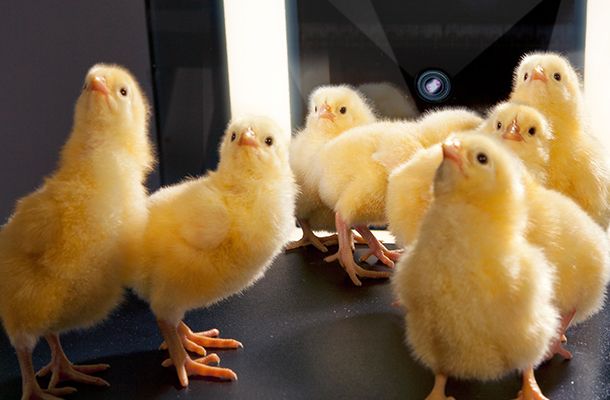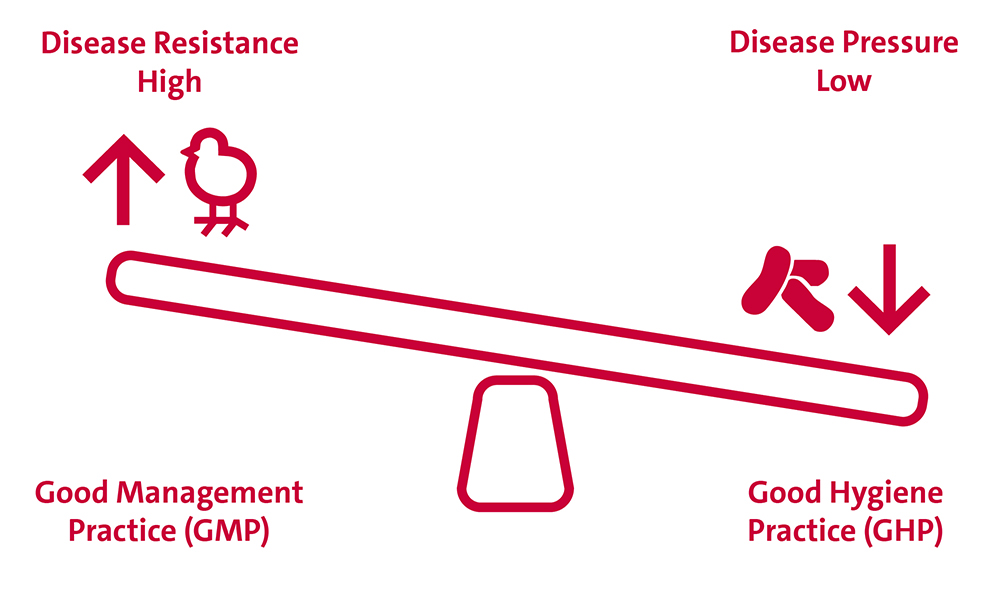Role of the hatchery in Antibiotic Free (ABF) production
Tags: Hatchery management | Whitepaper
, 26 November 2019

In the hatchery itself there is never a direct reason to apply antibiotics, as the chicks do not stay here for any length of time. If antibiotics are applied (in-ovo or by injection after hatch) this is done preventively to avoid disease problems or for potential benefits at the farm where the day-old-chicks will be delivered. Furthermore, on the farm itself antibiotics can be administered by feed or drinking water as a preventive measure or as a growth promotor.
This way of using antibiotics is coming under increasing criticism, as it leads to anti-microbial resistance (AMR), which means that bacteria might eventually become resistant to antibiotics. In the long run this causes problems for the treatment of diseases in humans and animals. Many modern poultry companies now aim to produce without using antibiotics, or at least to limit their use to therapeutic purposes only. Some countries have introduced legislation outlawing the use of antibiotics both as a preventive measure and as a growth promotor; in other countries companies are responding to consumer demands for 'safe & clean' food.
The question now is what role hatcheries could play in helping to stop the preventive use of antibiotics and to reduce the need for therapeutic use. This is clearly visualized in the figure below. Poultry, for example a broiler flock, will stay healthy if the following two conditions are met:
- High disease resistance, so the animals are robust and have a high level of immunity
- Low disease pressure, so pathogens (e.g. bacteria, viruses) are absent or only present at very low concentrations
Under these conditions there is no need to apply antibiotics and the broiler flock will potentially perform very well.

However, if disease resistance is low and/or disease pressure high, problems are likely to occur on the broiler farm. In this case it is tempting to use antibiotics preventively, as otherwise it is more likely that they will have to be used therapeutically in the event of problems such as increased mortality.
Advice
- Deliver day-old-chicks with high disease resistance by applying Good Management Practices on the breeder farm and in the hatchery. These include:
- Provide optimal incubation conditions to ensure strong and vital day-old chicks (with a well-closed navel and well-absorbed yolk sac)
- Apply a good vaccination program on the breeder farm or broiler farm and in the hatchery to ensure a high level of immunity
- Avoid stress factors for embryos and chicks, such as overheating, chilling, dehydration and delayed feed access
- Keep disease pressure in the hatchery low through Good Hygiene Practices:
- Implement biosecurity measures to prevent pathogens from entering the hatchery; this includes good egg hygiene
- Avoid cross-contamination to prevent transport of pathogens within the hatchery
- Clean and disinfect regularly to prevent further development of pathogens in the hatchery
Written by Gerd de Lange
Senior Poultry Specialist
I welcome your feedback on this article - and if you require any additional information, please don't hesitate to contact me.